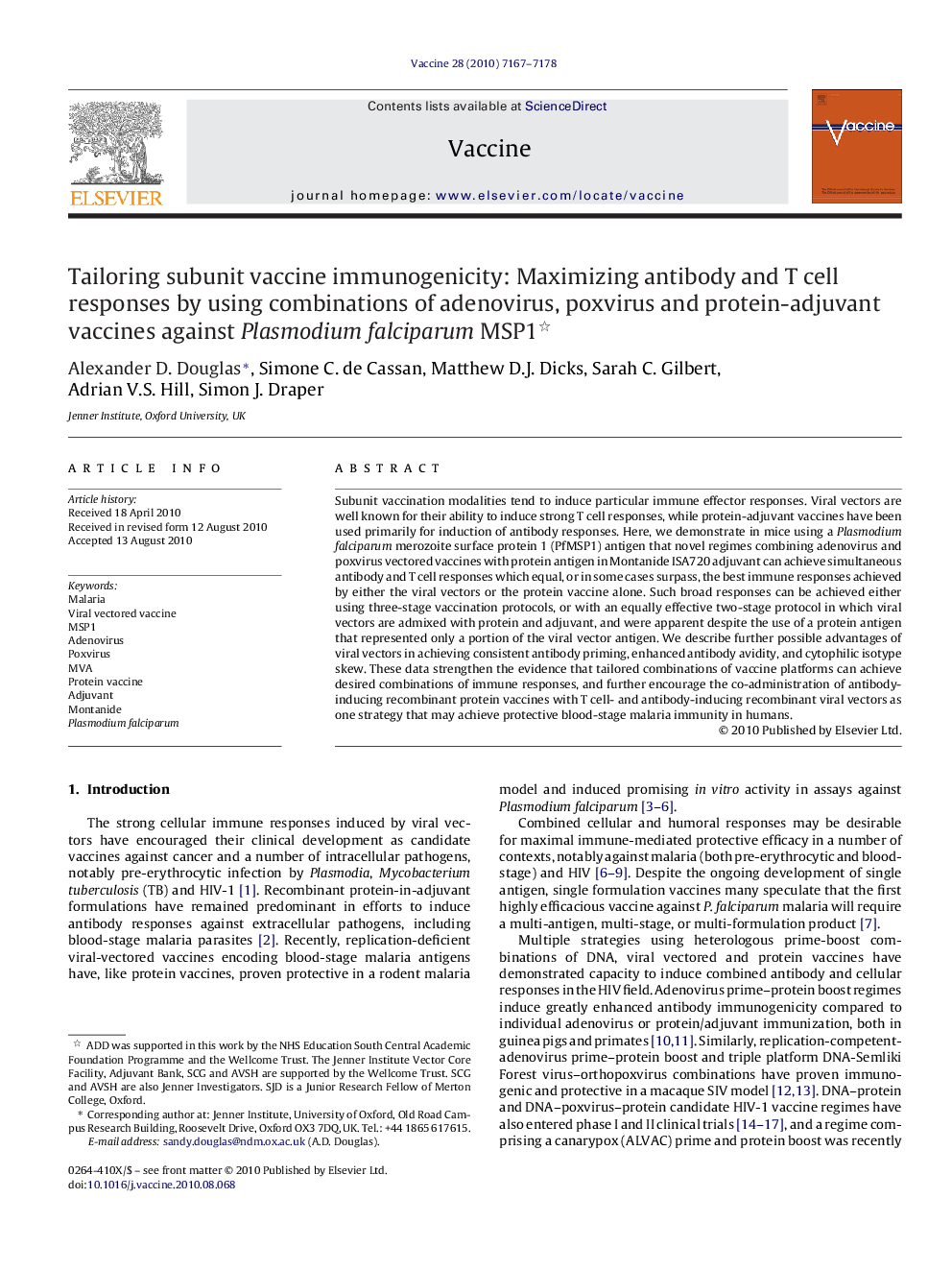| Article ID | Journal | Published Year | Pages | File Type |
|---|---|---|---|---|
| 10969941 | Vaccine | 2010 | 12 Pages |
Abstract
Subunit vaccination modalities tend to induce particular immune effector responses. Viral vectors are well known for their ability to induce strong T cell responses, while protein-adjuvant vaccines have been used primarily for induction of antibody responses. Here, we demonstrate in mice using a Plasmodium falciparum merozoite surface protein 1 (PfMSP1) antigen that novel regimes combining adenovirus and poxvirus vectored vaccines with protein antigen in Montanide ISA720 adjuvant can achieve simultaneous antibody and T cell responses which equal, or in some cases surpass, the best immune responses achieved by either the viral vectors or the protein vaccine alone. Such broad responses can be achieved either using three-stage vaccination protocols, or with an equally effective two-stage protocol in which viral vectors are admixed with protein and adjuvant, and were apparent despite the use of a protein antigen that represented only a portion of the viral vector antigen. We describe further possible advantages of viral vectors in achieving consistent antibody priming, enhanced antibody avidity, and cytophilic isotype skew. These data strengthen the evidence that tailored combinations of vaccine platforms can achieve desired combinations of immune responses, and further encourage the co-administration of antibody-inducing recombinant protein vaccines with T cell- and antibody-inducing recombinant viral vectors as one strategy that may achieve protective blood-stage malaria immunity in humans.
Related Topics
Life Sciences
Immunology and Microbiology
Immunology
Authors
Alexander D. Douglas, Simone C. de Cassan, Matthew D.J. Dicks, Sarah C. Gilbert, Adrian V.S. Hill, Simon J. Draper,
